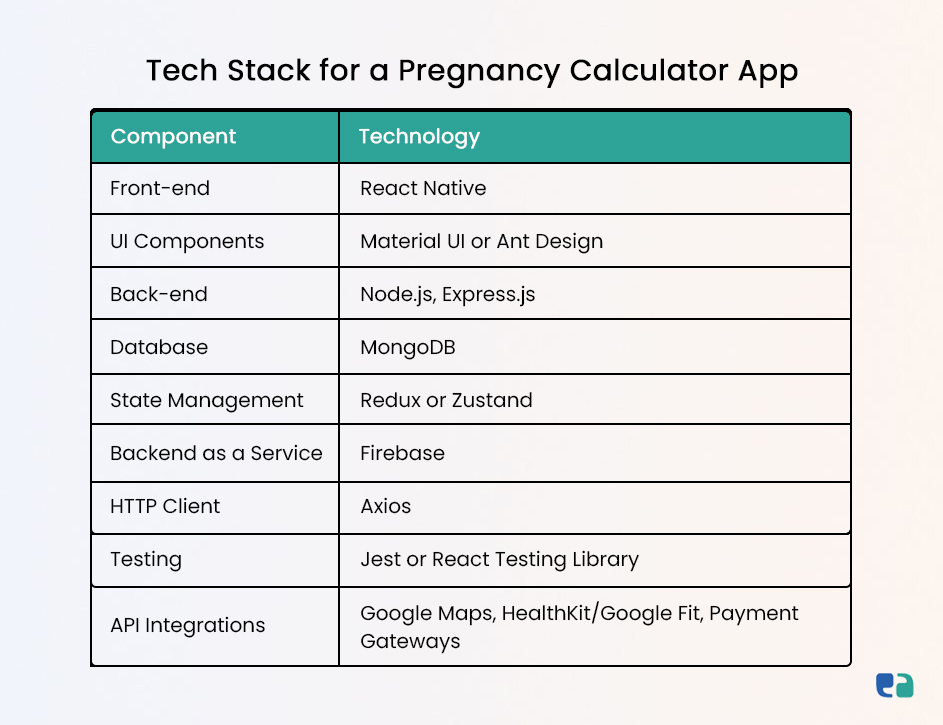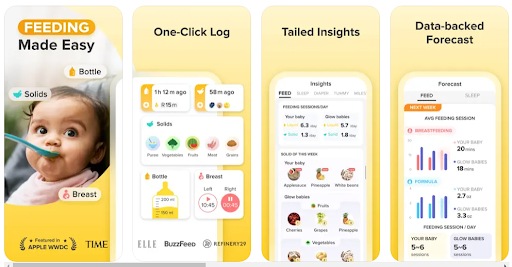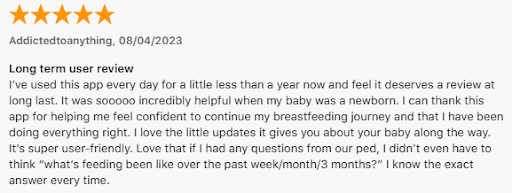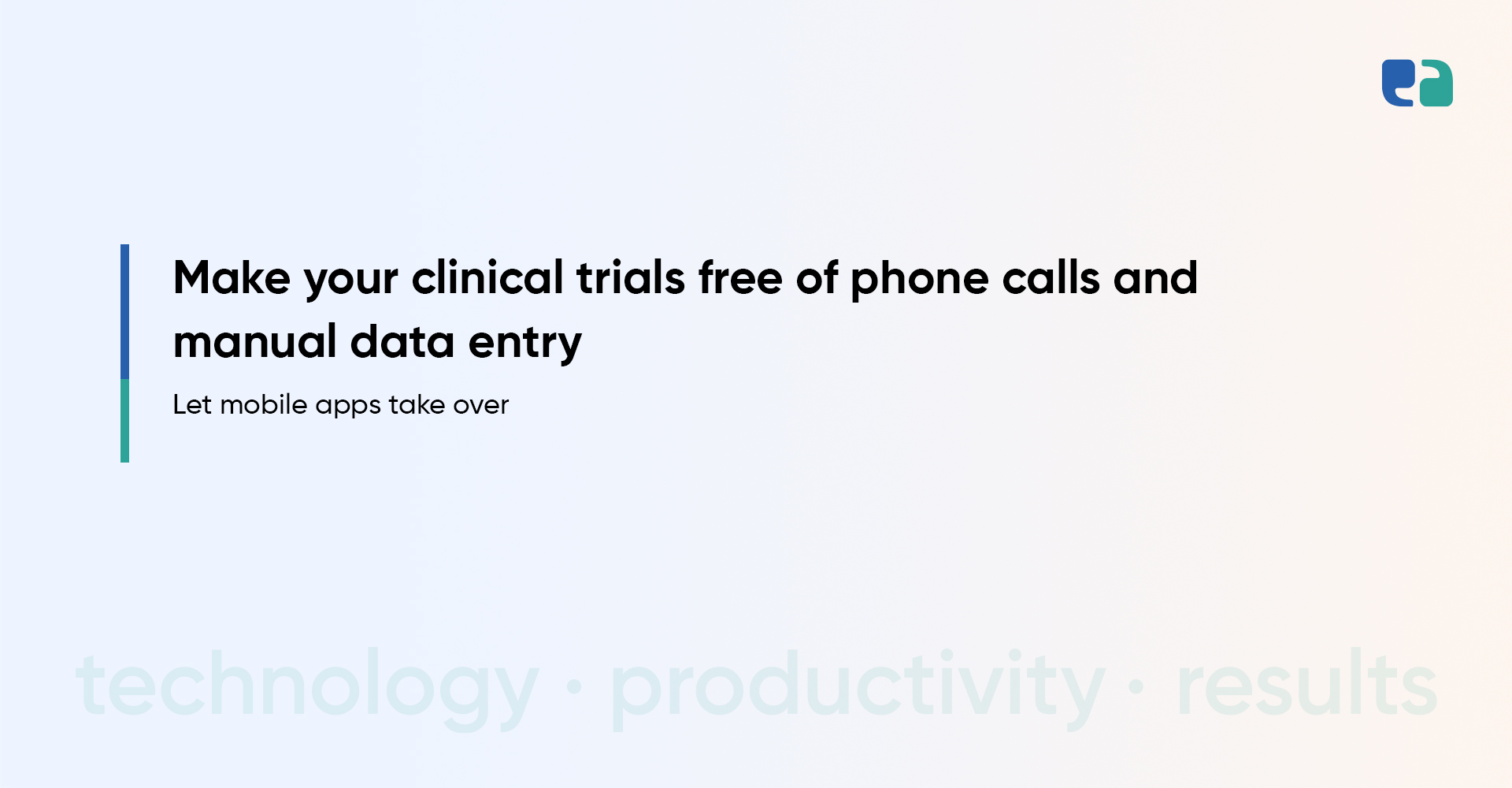The world of pregnancy apps is booming!
With a staggering 385,000 babies born every single day, there is an ever-growing demand for digital tools that support expectant mothers throughout their pregnancy journeys.
Pregnancy is not only a personal milestone but also a massive industry, and the technology sector has taken note.
One area within this flourishing femtech market that presents a significant opportunity for developers is the creation of pregnancy calculator apps.
These apps provide expectant mothers with a convenient and accessible way to track their pregnancies and calculate crucial milestones.
This blog is your go-to resource for everything you need to know about building a pregnancy calculator app that stands out in this competitive market.
We will explore the fundamental principles behind pregnancy calculations, guide you through essential app features, and equip you with the knowledge to develop a user-friendly, accurate, and ethical app that meets the needs of modern mothers-to-be.
Exciting Opportunities for Pregnancy App Developers
The rising popularity of pregnancy apps is opening up fantastic opportunities for developers. Here’s what you should know:
1. Serving Diverse Users: Many current apps don’t fully support culturally and linguistically diverse (CALD) women. By creating multilingual and culturally sensitive apps, you can fill this important gap.
2. Reliable Information Matters: Users are concerned about the accuracy of the information in pregnancy apps. If you focus on medical accuracy and transparency, you can earn the trust of both users and healthcare professionals.
3. Integrating with Healthcare Systems: There’s a growing interest in apps that connect with healthcare systems. If your app can seamlessly integrate with existing healthcare records, you’ll be ahead of the game.
4. Personalization and Community: Apps that offer personalized insights, partner tracking, and community support are very popular. By building engaging online communities, you can keep users coming back.
By tapping into these opportunities, you can create a pregnancy app that truly makes a difference!
The Growing Market for Pregnancy Apps

The market for pregnancy tracking and postpartum care apps is rising!
In 2022, it was valued at $217.3 million and is expected to grow at a remarkable 19.1% annually until 2030.
What’s driving this growth? Here are a few key factors:
- Health Awareness: More women are becoming health-conscious and seeking digital solutions to support their pregnancy journeys.
- Tech Development: There’s a push for better women’s health technology, making apps more accessible and effective.
- Digital Literacy and Connectivity: Improved internet access means more women can use these apps with ease.
- Rise of FemTech: The femtech sector is thriving! In 2020, funding for digital women’s health startups jumped by 105%, with around 50 new femtech companies launching between 2020 and 2021.
This is an exciting time to enter the pregnancy app market, with plenty of opportunities for growth and innovation!
“The convenience of apps and remote monitoring are excellent perks, and the initial data are promising,”
Robyn Horsager-Boehrer, M.D. Obstetrics and Gynecology
Top 5 Pregnancy Calculator Apps to Learn From
Essential Features for Your Pregnancy Calculator App
When building a pregnancy calculator app, incorporating key features will enhance user experience and provide valuable support for expectant mothers. Here are some essential features to consider:
1. Due Date Calculator
A simple tool to estimate the expected due date based on the user’s last menstrual period (LMP) or conception date.
2. Pregnancy Timeline
A visual timeline that outlines key milestones, including trimesters, fetal development stages, and important appointments.
3. Symptom Tracker
A feature for users to log daily symptoms, moods, and health changes throughout their pregnancy for better monitoring.
4. Personalized Insights
Customized tips, articles, and advice based on the user’s week of pregnancy, providing relevant information at each stage.
5. Health and Nutrition Guidance
Recommendations for prenatal vitamins, diet, and exercise tailored to the user’s stage of pregnancy.
6. Appointment Reminders
Notifications for upcoming prenatal appointments, tests, and vaccinations to help users stay on track.
7. Weight Tracker
A tool to monitor weight gain throughout pregnancy, helping users adhere to recommended guidelines.
8. Kick Counter
A simple way for users to track fetal movements, providing reassurance and important information for healthcare providers.
9. Community Support
A forum or chat feature where users can connect with other expectant mothers for support, advice, and shared experiences.
10. Integration with Healthcare Providers
Options to share health data with healthcare professionals, enhancing communication and care continuity.
11. Multilingual Support
Offering the app in multiple languages to cater to a diverse user base.
12. User-Friendly Design
An intuitive interface that ensures easy navigation and accessibility for all users.
Choose the Right Tech Stack and Development Approach
When developing your pregnancy calculator app, selecting the right tech stack and approach is crucial. Here are some key points to consider:
1. Tech Stack
Start by choosing development frameworks and platforms.
Think about whether you want your app on iOS, Android, or both. Popular programming languages like Swift for iOS and Kotlin for Android can help you build a robust app.
2. Integration with Health Platforms
It’s important to sync your app with wearables and health apps.
Connecting with platforms like Apple Health and Google Fit allows users to track their health data in one place.
This integration can enhance the user experience and provide valuable insights.
3. Compliance and Security
Protecting user data is a top priority.
Make sure your app complies with regulations like HIPAA, PIPEDA, and GDPR. This ensures data privacy and security, giving users peace of mind.

Future Trends and Technologies in Pregnancy Calculator Apps
1. Artificial Intelligence (AI) and Machine Learning
AI can analyze user data to provide personalized insights and recommendations, helping expectant mothers track their health and pregnancy journey more effectively.
2. Wearable Integration
Integration with wearable devices, like smartwatches, will allow for real-time monitoring of health metrics (heart rate, activity level) and syncing data directly into the app.
3. Telehealth Features
Incorporating telehealth functionalities, such as virtual consultations with healthcare providers, will enhance the app’s value by offering immediate support and guidance.
4. Augmented Reality (AR)
AR can create interactive experiences for users, such as visualizing fetal development or simulating prenatal exercises, making the app more engaging.
5. Blockchain Technology
Implementing blockchain can enhance data security and privacy, ensuring that sensitive health information is protected and immutable.
6. Voice-Activated Features
Incorporating voice recognition technology will allow users to interact with the app hands-free, making it easier to access information and track data while multitasking.
Build Your Pregnancy Calculator App with the Right Solutions
Ready to develop your pregnancy calculator app? Let’s take it to the next level!
Here’s how we can help you build your pregnancy calculator app:
You can choose between a mobile app or a web app, depending on your budget and business goals.
Just a heads up—make sure your developers have healthcare expertise.
mHealth app development can be complex, and it’s best handled by those who know the ins and outs of the healthcare industry.








